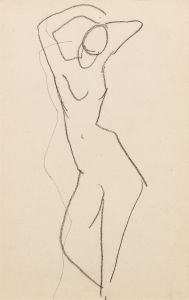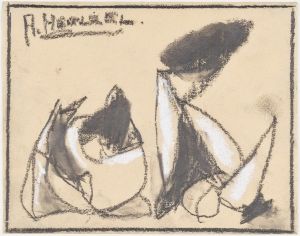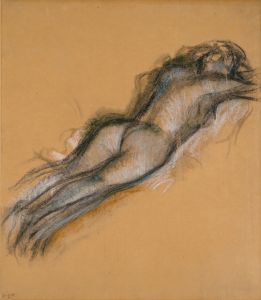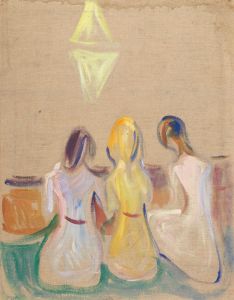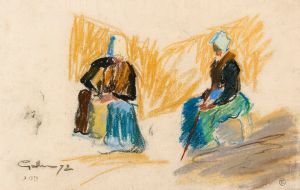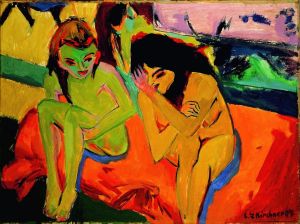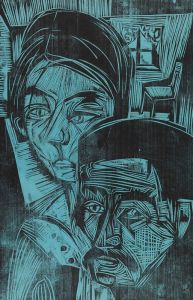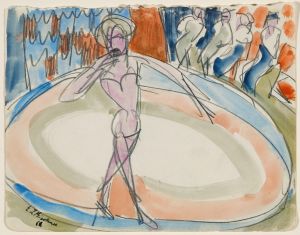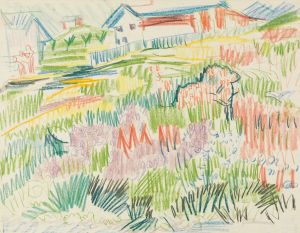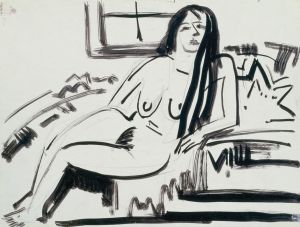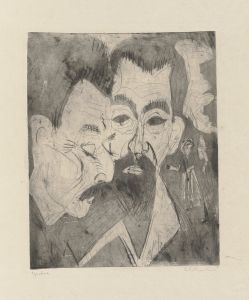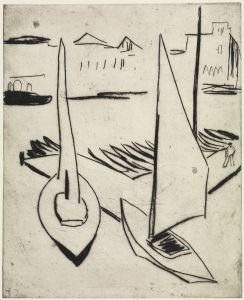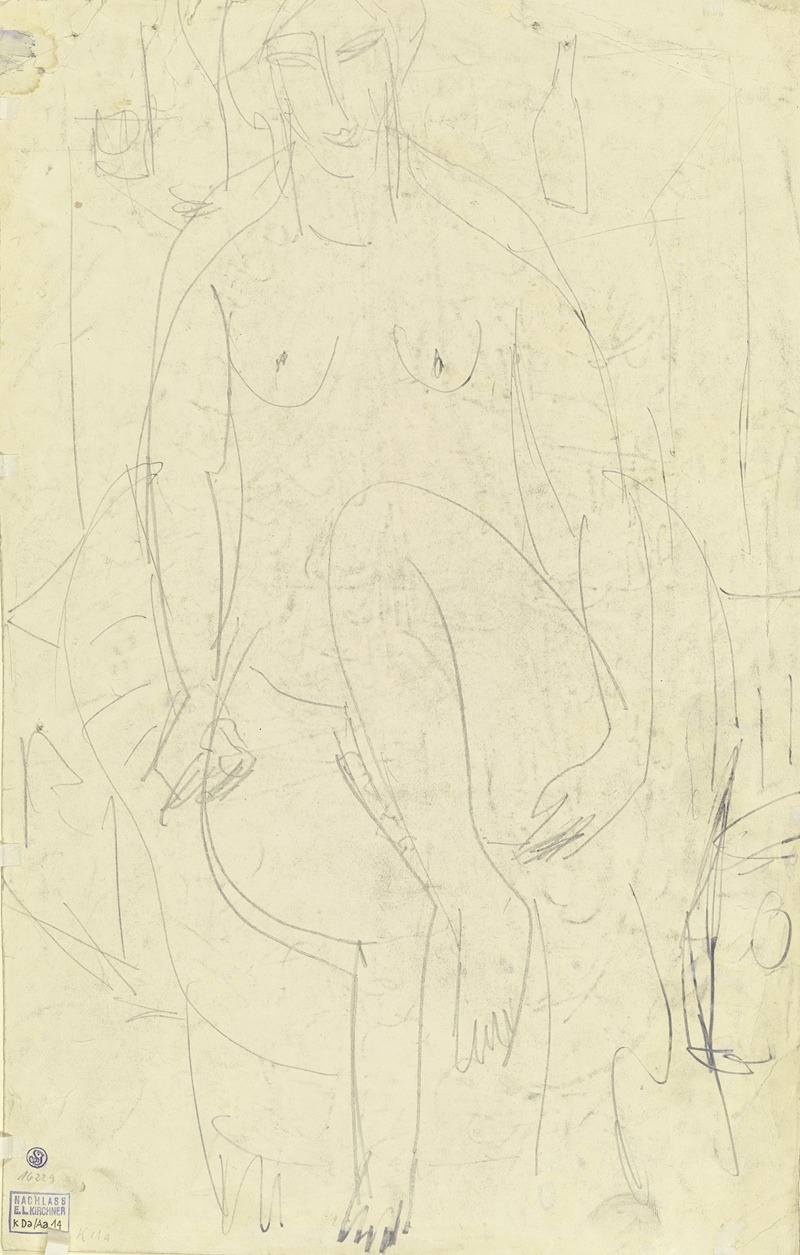
Sitting female nude
A hand-painted replica of Ernst Ludwig Kirchner’s masterpiece Sitting female nude, meticulously crafted by professional artists to capture the true essence of the original. Each piece is created with museum-quality canvas and rare mineral pigments, carefully painted by experienced artists with delicate brushstrokes and rich, layered colors to perfectly recreate the texture of the original artwork. Unlike machine-printed reproductions, this hand-painted version brings the painting to life, infused with the artist’s emotions and skill in every stroke. Whether for personal collection or home decoration, it instantly elevates the artistic atmosphere of any space.
Ernst Ludwig Kirchner was a prominent German expressionist painter and one of the founding members of the artist group Die Brücke (The Bridge), which played a pivotal role in the development of modern art in the early 20th century. Kirchner's work is characterized by its bold use of color, dynamic compositions, and an expressive style that sought to convey emotional and psychological depth. Among his many works, "Sitting Female Nude" is a notable example that reflects his artistic vision and the themes prevalent in his oeuvre.
"Sitting Female Nude" by Kirchner is a painting that exemplifies the expressionist movement's focus on capturing the essence of the subject rather than adhering to realistic representation. The painting features a female figure, seated and unclothed, rendered in a manner that emphasizes form and emotion over anatomical precision. Kirchner's use of vibrant colors and dynamic brushstrokes imbues the work with a sense of immediacy and vitality, inviting viewers to engage with the emotional resonance of the piece rather than its literal depiction.
The subject of the nude was a recurring theme in Kirchner's work, reflecting both his interest in the human form and the broader expressionist movement's exploration of primal and instinctual aspects of human nature. In "Sitting Female Nude," the figure is often depicted with exaggerated proportions and bold outlines, a stylistic choice that underscores the emotional intensity of the work. This approach aligns with Kirchner's belief that art should transcend mere representation and instead evoke the inner experiences and emotions of both the artist and the viewer.
Kirchner's work, including "Sitting Female Nude," was heavily influenced by non-Western art forms, particularly African and Oceanic art, which he encountered through museum collections and exhibitions in Germany. These influences are evident in the simplified forms and expressive lines that characterize his depiction of the human figure. Kirchner and his contemporaries in Die Brücke sought to break away from the constraints of academic art and embrace a more spontaneous and direct form of expression, drawing inspiration from what they perceived as the raw and unmediated qualities of non-Western art.
The historical context of Kirchner's work is also significant. The early 20th century was a period of rapid social and cultural change, marked by industrialization, urbanization, and the upheavals of World War I. Kirchner's art reflects the anxieties and tensions of this era, as well as a desire to find new means of expression that could capture the complexities of modern life. His portrayal of the nude, therefore, can be seen as both a personal exploration of form and a broader commentary on the human condition in a rapidly changing world.
"Sitting Female Nude" is a testament to Kirchner's innovative approach to art and his contribution to the expressionist movement. The painting not only showcases his distinctive style but also encapsulates the themes of emotional depth and existential inquiry that define much of his work. Through his bold use of color and form, Kirchner invites viewers to look beyond the surface and engage with the deeper emotional and psychological dimensions of his art.





